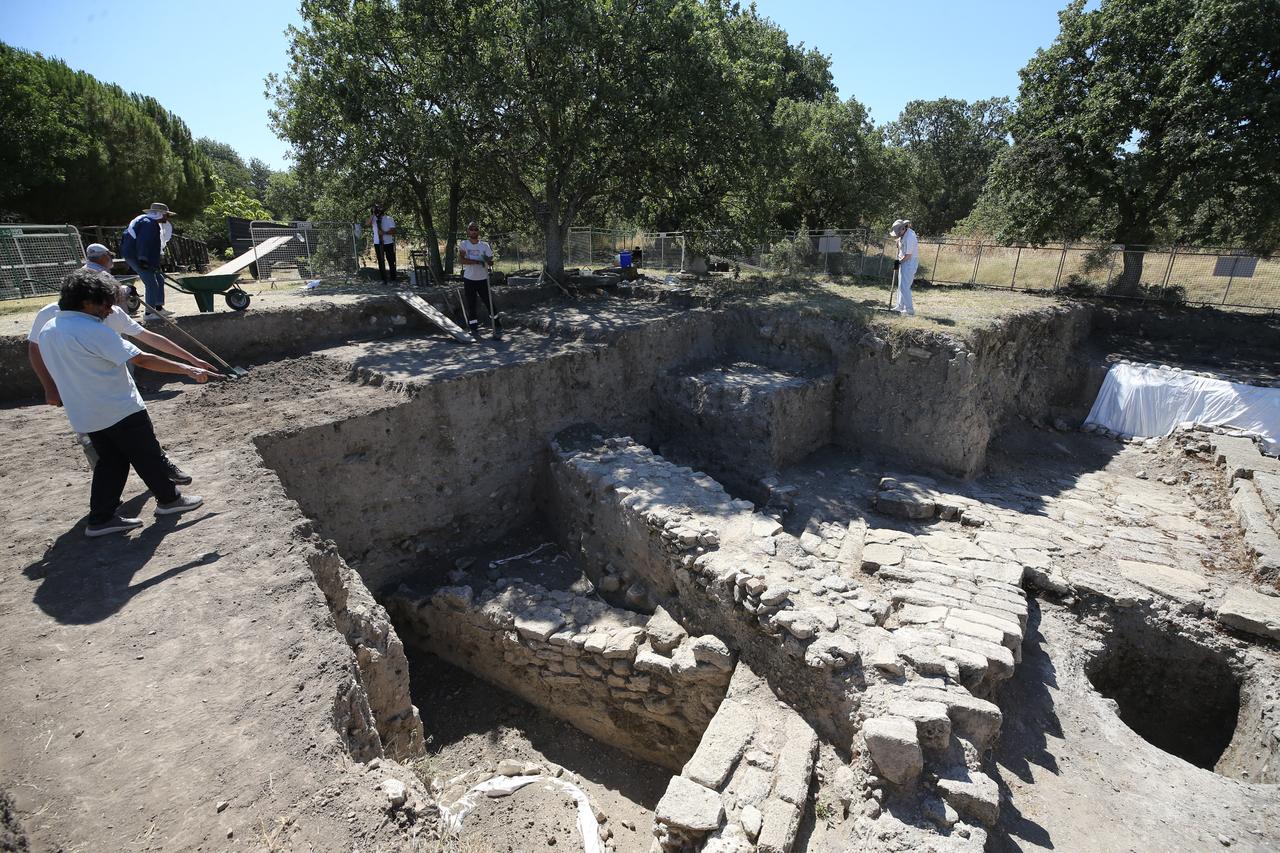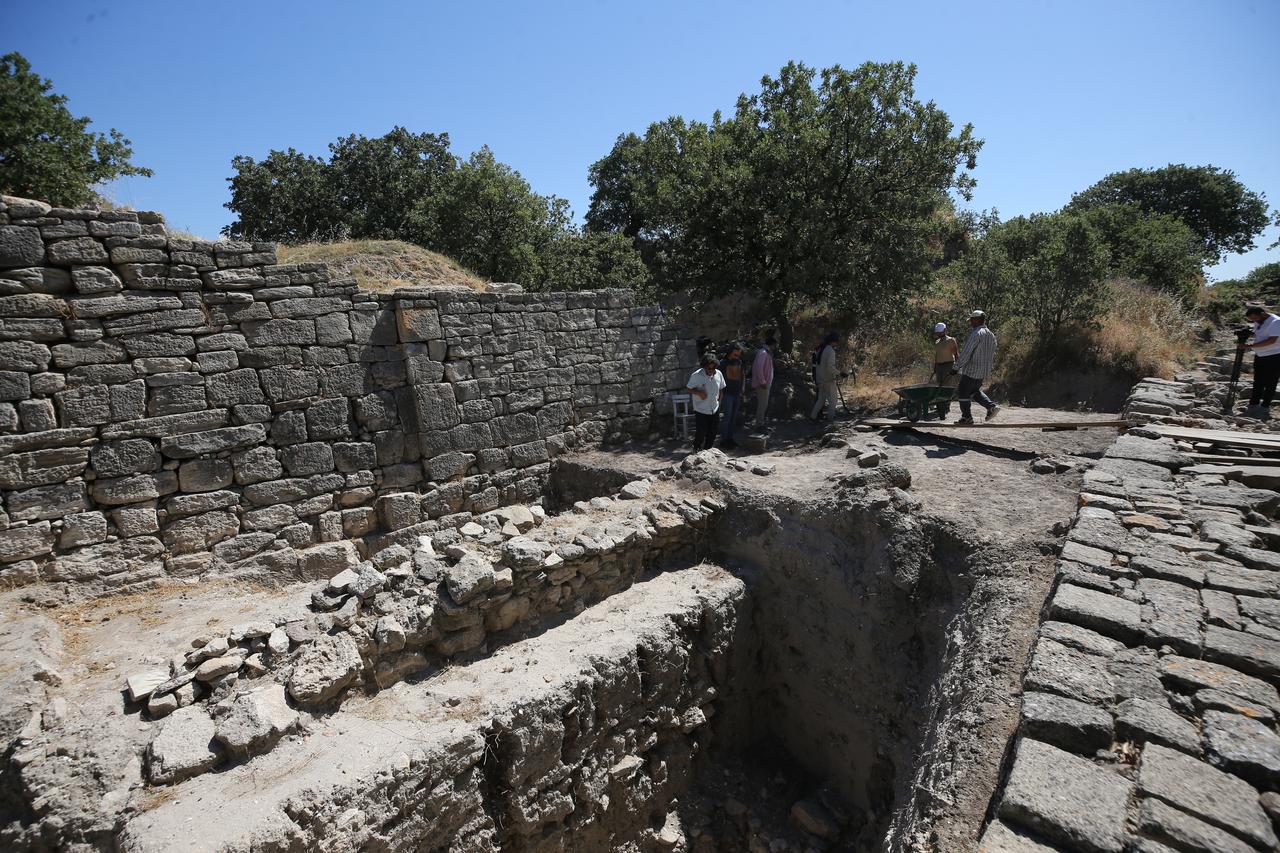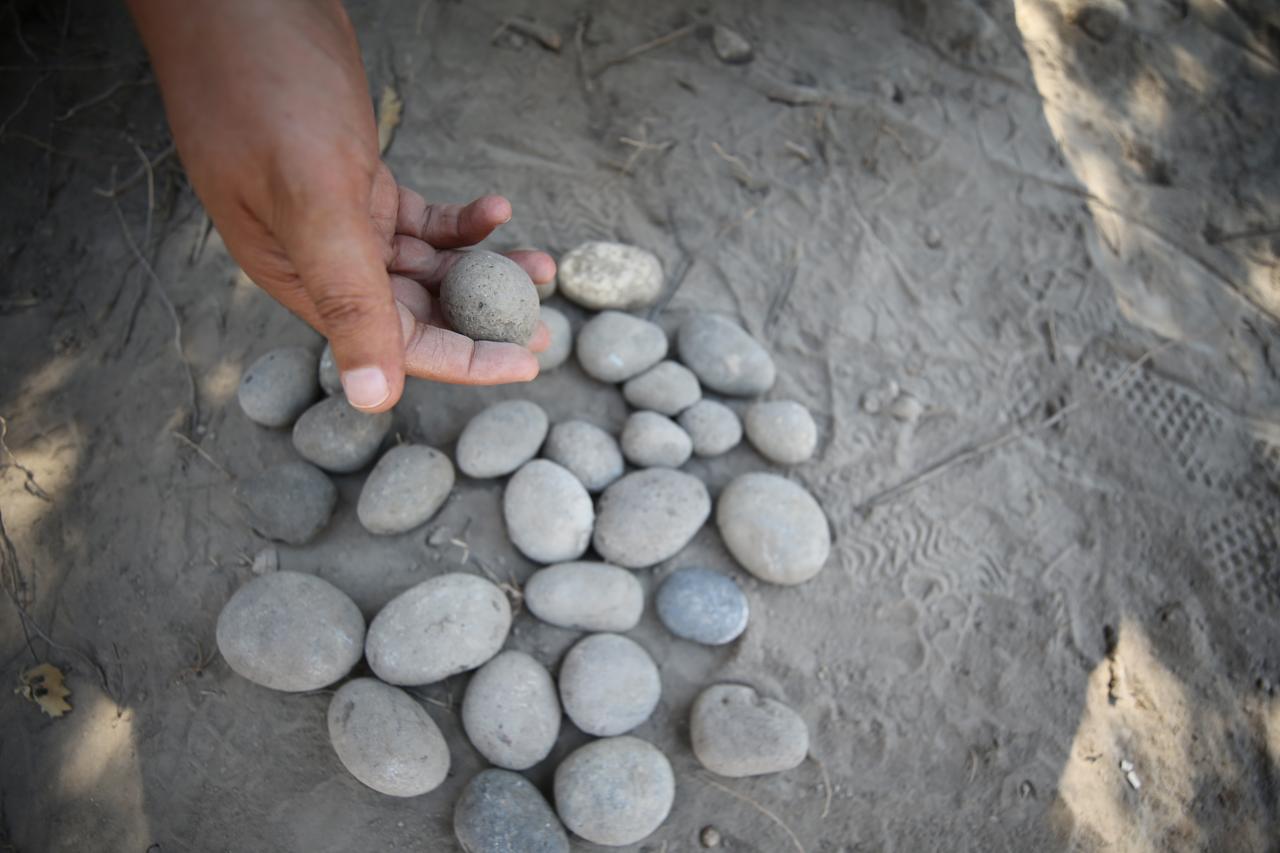
In the ancient city of Troy—listed as a UNESCO World Heritage Site and located in northwestern Türkiye—archaeologists have turned their focus this season to a specific goal: uncovering physical evidence that might be linked to the legendary Trojan War. Although the excavations only recently resumed, early discoveries have already brought promising results, including a cache of 3,500-year-old sling stones found near a palace structure attributed to the Late Bronze Age.
Led by Professor Rustem Aslan of Canakkale Onsekiz Mart University (COMU), the team is working under the auspices of Türkiye’s Ministry of Culture and Tourism, with support from the provincial governor’s office, the village administration of Tevfikiye, and main sponsor ICDAS, a leading Turkish industrial company.

This year’s excavations are zooming in on what archaeologists refer to as the “destruction layer” of the Late Bronze Age—roughly dated to the 13th century B.C. This period is often associated with the fabled Trojan War, said to have been fought between the Greeks and the people of Troy after Prince Paris of Troy abducted Helen, the queen of Sparta.
Prof. Aslan noted that past work near the palace and defensive walls had revealed a number of war-related artifacts, including arrowheads. “In our work this season, we aim to reach the destruction layer of the Late Bronze Age that is thought to be linked to the Trojan War,” he said.
Aslan emphasized that while it is difficult to identify traces of ancient warfare, previous excavations—especially those carried out in the 1930s by Carl Blegen and in the 1980s by Manfred Osman Korfmann—had unearthed signs of violent destruction, including burnt layers, damaged buildings, and carelessly buried skeletons in areas now called Troy 6 and Troy 7.
“These destruction layers contain war tools and disturbed human remains that could indicate conflict,” said Aslan. “We encountered the first hints of such layers in the area between the agora, the palace, and the defensive walls.”
The archaeological team is now working to broaden these trenches under the Heritage for the Future project, hoping to gather clearer evidence of a major conflict. As Aslan put it, “We hope this season will bring surprising results.”

Among the most recent findings are sling stones made of clay and river pebbles, discovered in dense concentrations just in front of the palace structure attributed to Troy 6. These projectiles—small, rounded stones used in slings—were a common weapon during the Bronze Age and appear to have been deposited deliberately.
According to Prof. Aslan, the location and number of stones found suggest a military function. “The fact that so many sling stones were uncovered in such a small area in front of the palace points to an activity related to defense or assault,” he said. “Last year, we also found two arrowheads from the same period in this area, which indicates that more significant discoveries may follow.”
The Trojan War, long regarded as myth, has fascinated scholars and archaeologists since the 19th century. Excavations at Troy began in 1863 with Frank Calvert, followed by Heinrich Schliemann in 1871, and later Wilhelm Dorpfeld and Carl Blegen. Today, the search continues to determine how much of Homer’s epic is rooted in historical events.
Although the story of the war is legendary—featuring a wooden horse, divine interventions, and a decade-long siege—the archaeological team in Türkiye is working to identify real-world evidence from the layers most likely to hold answers.